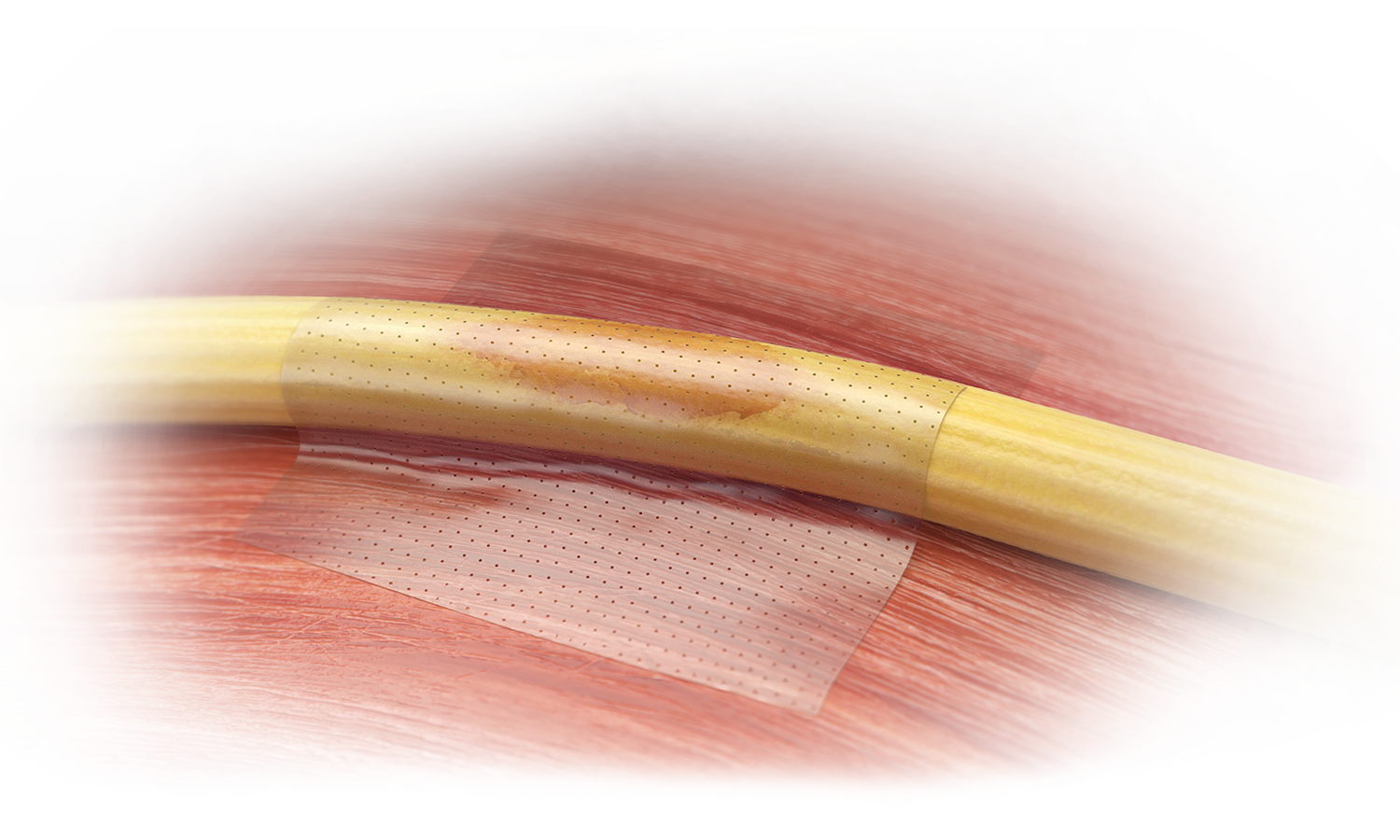An Optimized Biomaterial for Nerve Repair
NeuroShield is a chitosan polysaccharide membrane indicated for the repair of peripheral nerve injuries by providing a protective barrier during tissue healing. Checkpoint NeuroShield is transparent for complete visualization of the nerve, flexible, easy to handle, bioabsorbable, and available in two sizes to cover a wide range of applications and nerve diameters.
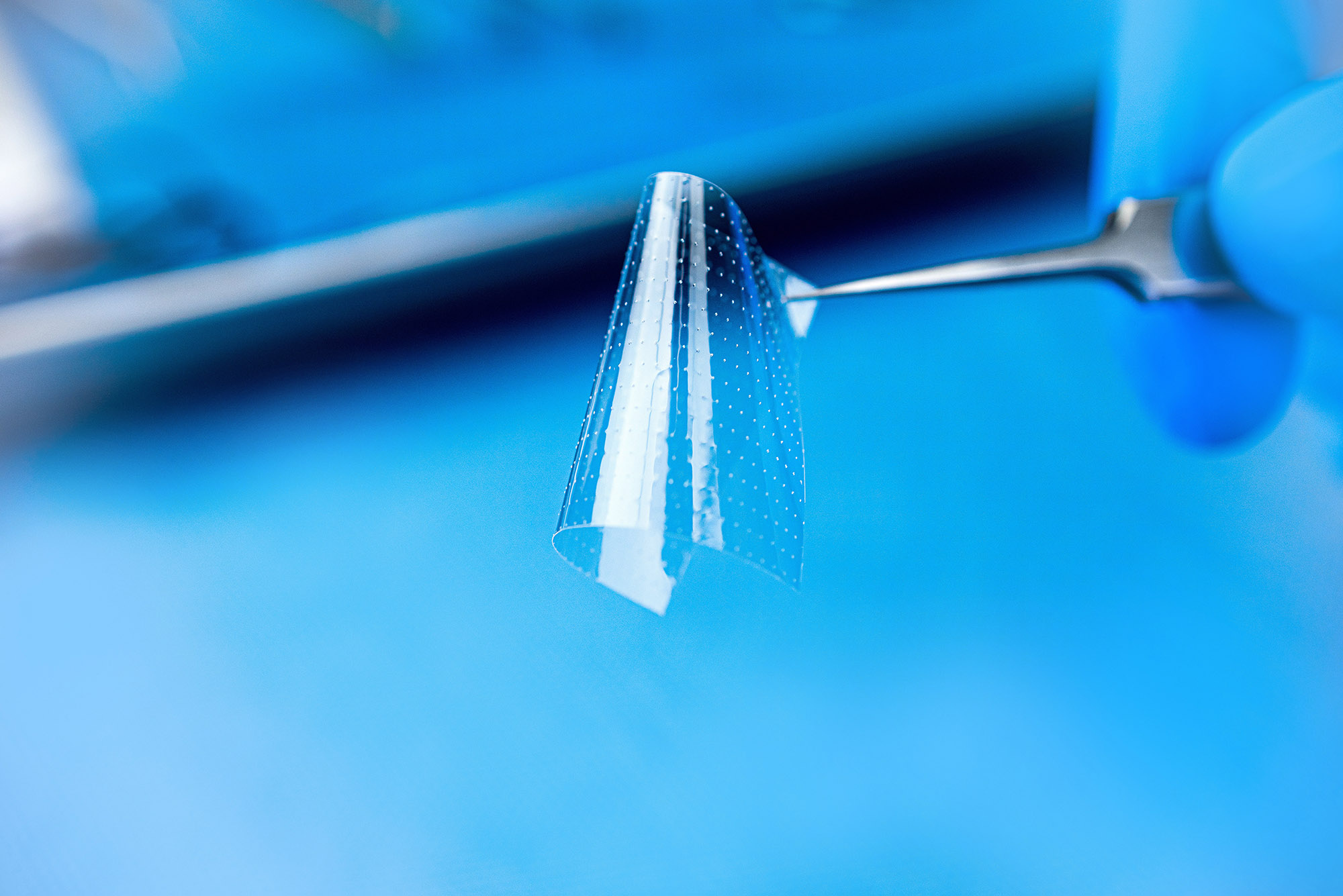
Why Processing Matters
Chitosan is produced commercially by the controlled deacetylation of chitin. The degree of acetylation is one of the most important chemical characteristics of chitosan processing and has a direct influence on the final product characteristics of NeuroShield for peripheral nerve repair.1,2
*This chemical deproteinization step removes the protein component found in shellfish that commonly causes shellfish allergies.4
The Power of Positive
Chitosan is the only naturally occurring positively charged biopolymer.5,6 Positive charge density is a key factor affecting the properties of chitosan for nerve repair.1
- Inhibits fibroblast proliferation7
- Supports Schwann cell activity2,4
- Antimicrobial8,9,10
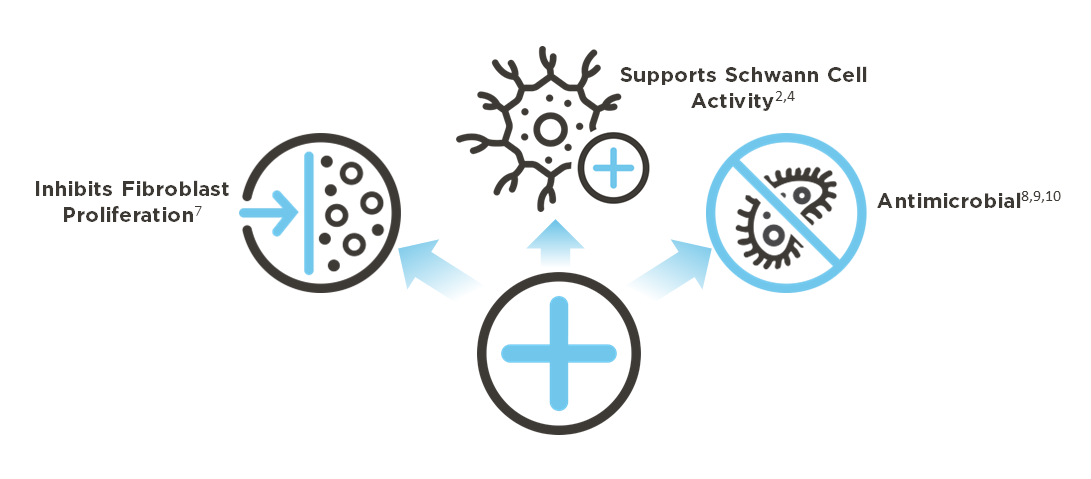
PRECLINICAL AND CLINICAL EVIDENCE
Preclinical and clinical data is available to support the use of chitosan membranes, such as Checkpoint NeuroShield, in peripheral nerve repair applications.
In a clinical study, the use of Checkpoint NeuroShield as a neuroprotective barrier resulted in statistically significant improvement in recovery compared to the control group.11
In a rat median nerve model, Checkpoint NeuroShield supported nerve fiber regeneration and functional recovery of neuromuscular function 12 weeks after median nerve damage.12
Preclinical, in vitro studies have shown Schwann cell viability, migration, and proliferation on chitosan membranes, particularly those with a low degree of acetylation.2,13-15
(Right) Immunofluorescence of rat primary dissociated dorsal root ganglia (DRGs) axonal outgrowth when seeded on plain chitosan film.14
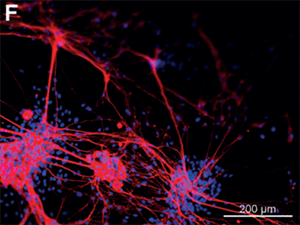
Bioresorption Compatible with the Healing Cascade
Checkpoint NeuroShield’s chitosan hydrogel structure supports and protects the underlying nerve structure during soft tissue healing. Over time, the chitosan membrane naturally resorbs, degrading into compounds that may be beneficial for nerve regeneration.1-3
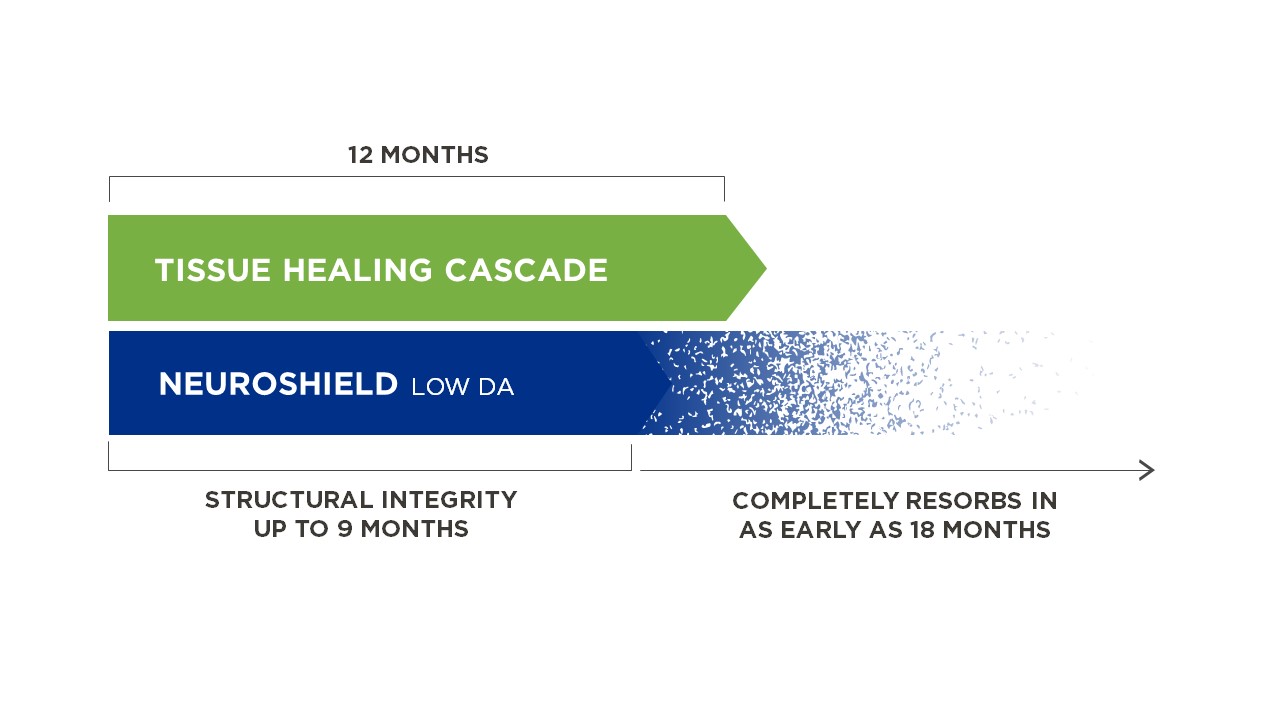
NeuroShield and Chitosan: The Developer's Perspective
Dr. Thomas Freier, co-developer of NeuroShield, shares his thoughts about chitosan and its use in the NeuroShield Chitosan Nerve Wrap.
TRY THE NEUROSHIELD CHITOSAN MEMBRANE
Request a demo or trialRELATED INFORMATION
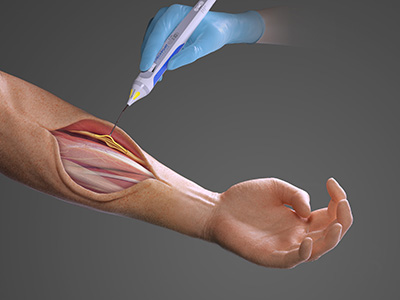
CHECKPOINT®
Intraoperative Stimulators

CHECKPOINT EDGE™
Nerve Cutting Kit
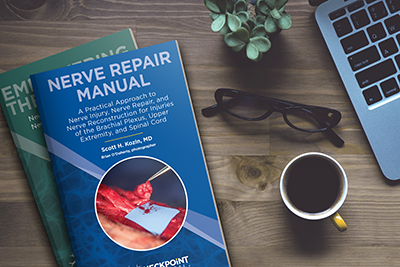
NERVE EDUCATION
REFERENCES
-
Yilmaz Atay, Hüsnügül. “Antibacterial Activity of Chitosan-Based Systems.” Functional Chitosan: Drug Delivery and Biomedical Applications 457–489. 6 Mar. 2020.
-
Freier T, Koh HS, Kazazian K, Shoichet MS. Controlling cell adhesion and degradation of chitosan films by N-acetylation. Biomaterials. 2005;26(29):5872-5878. doi:10.1016/j.biomaterials.2005.02.033
-
Haastert-Talini K, Geuna S, Dahlin LB, et al. Chitosan tubes of varying degrees of acetylation for bridging peripheral nerve defects. Biomaterials. 2013;34(38):9886-9904. doi:10.1016/j.biomaterials.2013.08.074
-
Younes I, Rinaudo M. Chitin and chitosan preparation from marine sources. Structure, properties and applications. Mar Drugs. 2015;13(3):1133-1174. Published 2015 Mar 2. doi:10.3390/md13031133
-
Matica A. Biodegradability of chitosan-based products. New Front Chem. 2017;26:75-86.
-
Pavinatto FJ, Caseli L, Oliveira ON. Chitosan in nanostructured thin films. Biomacromolecules. 2010;11(8):1897-1908. doi:10.1021/bm1004838
-
Chatelet C, Damour O, Domard A. Influence of the degree of acetylation on some biological properties of chitosan films. Biomaterials. 2001;22(3):261-268. doi:10.1016/s0142-9612(00)00183-6
-
Ke CL, Deng FS, Chuang CY, Lin CH. Antimicrobial Actions and Applications of Chitosan. Polymers (Basel). 2021;13(6):904. Published 2021 Mar 15. doi:10.3390/polym13060904
-
Lillo L, Alarcón J, Cabello G, Céspedes C, Caro C. Antibacterial activity of chitooligosaccharides. Z Naturforsch C J Biosci. 2008;63(9-10):644-648. doi:10.1515/znc-2008-9-1005
-
Jeon YJ, Park PJ, and Kim SK (2001), Antimicrobial effect of chitooligosaccharides produced by bioreactor. Carbohydr. Polym. 44, 71-76.
-
Porpiglia F, Manfredi M, Checcucci E, et al. Use of chitosan membranes after nerve-sparing radical prostatectomy improves early recovery of sexual potency: results of a comparative study. BJU Int. 2019;123(3):465-473. doi:10.1111/bju.14583
-
Muratori L, Fregnan F, Ronchi G, et al. New basic insights on the potential of a chitosan-based medical device for improving functional recovery after radical prostatectomy. BJU Int. 2019;124(6):1063-1076. doi:10.1111/bju.14834
-
Carvalho CR, López-Cebral R, Silva-Correia J, et al. Investigation of cell adhesion in chitosan membranes for peripheral nerve regeneration. Mater Sci Eng C Mater Biol Appl. 2017;71:1122-1134. doi:10.1016/j.msec.2016.11.100
-
Wrobel S, Serra SC, Ribeiro-Samy S, et al. In vitro evaluation of cell-seeded chitosan films for peripheral nerve tissue engineering. Tissue Eng Part A. 2014;20(17-18):2339-2349. doi:10.1089/ten.TEA.2013.0621
-
Yuan Y, Zhang P, Yang Y, Wang X, Gu X. The interaction of Schwann cells with chitosan membranes and fibers in vitro. Biomaterials. 2004 Aug;25(18):4273-8. doi: 10.1016/j.biomaterials.2003.11.029. PMID: 15046917
INDICATIONS FOR USE
NeuroShield® is indicated for the repair of peripheral nerve injuries in which there is no gap or where a gap closure can be achieved by flexion of the extremity. NeuroShield nerve membranes are designed exclusively for single use. Allergic reactions to implanted products containing chitosan are not yet known. However, since chitosan is derived from shellfish, individuals with known shellfish allergies should exercise caution in the use of any product containing chitosan. As with all procedures carried out on peripheral nerves, there is a risk of the nerve not regenerating. Please see Instructions for Use for complete product specifications, indications, contraindications, precautions, and warnings.
4030-MKT-004-D
